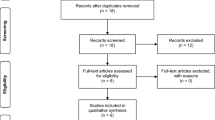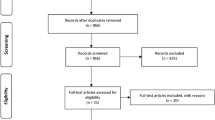Abstract
Data sources PubMed, ScienceDirect and Cochrane, Open Grey. Journal of Dentistry; Journal of Endodontics; International Endodontic Journal; Australian Endodontic Journal; and Oral Surgery, Oral Medicine, Oral Pathology, Oral Radiology, and Endodontics
Study selection Two independent reviewers screened the titles, abstracts and/or full-text for randomised clinical trials and prospective clinical studies dealing with the success rate of treating cariously exposed vital human permanent posterior teeth with a partial pulpotomy. The cases were followed up for 6 to 24 months.
Results The study included five randomised clinical trials and six prospective studies. The pooled data indicated that partial pulpotomy in carious exposed teeth had a success rate of 98%, 96% and 92% after 6 months and 1 and 2 years of follow-up. However, teeth with a presumptive diagnosis of irreversible pulpitis displayed significantly lower success rates. Interestingly, neither the pulp capping material used nor the status of the root apex (apical root closure) or age of the patient affected the treatment success rate.
Conclusion The study reported high 2 year success rates when cariously exposed permanent posterior teeth were treated using a partial pulpotomy procedure.
Similar content being viewed by others
A commentary on
Elmsmari F, Ruiz X F, Miró Q, Feijoo-Pato N, Durán-Sindreu F, Olivieri J G.
Outcome of Partial Pulpotomy in Cariously Exposed Posterior Permanent Teeth: A Systematic Review and Meta-analysis. J Endod 2019; 45: 1296-1306

GRADE rating
Commentary
Pulpotomy is a vital therapy where the coronal pulp is removed surgically in order to maintain the vitality of the remaining coronal or radicular pulp tissue. Complete pulpotomy (cervical pulpotomy) is reported to arrest dentin formation in immature permanent teeth and can result in obliteration of the root canal space.1,2 Partial pulpotomy on the other hand looks to only remove damaged and hyperaemic tissue in close proximity to the exposed pulps;3 allowing for preservation of the cell rich coronal pulp which has better healing potential.4 Partial pulpotomy is suggested as a treatment option in managing teeth that are asymptomatic, but have a carious exposure that is 1-2 mm in diameter and with bleeding that can be controlled in under 2 minutes.5
The study by Elmsmari et al. (2019), systematically analysed the literature for the outcome of partial pulpotomy in cariously exposed posterior permanent teeth following a 6, 12 and/or 24-month follow-up period (Elmsmari, Firas et al. 2019). The study included 11 studies; five randomised clinical studies and six prospective clinical studies. Studies with less than 6 months' follow-up period, a sample size of less than ten, or a drop out of 20% were excluded. The authors claim that a drop out of 20% risks the validity of the study and hence such studies were excluded. This is interesting as studies with a larger sample size could afford to have a larger drop to meet the minimum ten sample size criteria. L. Bjørndal et al. (2017) study was excluded as it had an overall drop out greater than 20%, however the sample size for the partial pulpotomy part of the study had a final sample size of twenty-seven. The study reported only an 11.1% success rate and questioned the value of partial pulpotomy in teeth with deep carious lesion and pulp exposure. This finding is contrary to that reported in the systematic review and meta-analysis by Elmsmari et al. (2019). It could hence be asked if this exclusion could have altered the findings of Elmsmari et al.6
The pulp tissue adjacent to a carious lesion is subject to bacteria induced local irreversible changes, however, the deeper remaining pulp tissue is reported to remain free from significant inflammatory changes. The degree of infection and inflammation are among the many factors that may influence the treatment planning. Elmsmari et al. (2019) reported preoperative pulp status as the only prognostic factors influencing success.6 They indicated that the choice between vital pulp therapy or root canal therapy is based on presumptive diagnosis of cases; a prognostic diagnosis of irreversible pulpitis was subject to greater failure rates. The authors, however, have acknowledged that only two papers reported presumptive diagnoses of irreversible pulpitis and hence caution is required when interpreting the data on success of partial pulpotomy procedures in teeth with carious exposure. In the absence of a precise diagnostic technique to assess the degree of inflammation it would be prudent for the clinician to continue to use the cessation of bleeding (under 2 minutes) to determine the need for partial pulpotomy, cervical pulpotomy or root canal therapy.4
Elmsmari et al. (2019) reported no significant difference in the outcomes with calcium hydroxide (CH) or MTA (mineral trioxide aggregrate). However, this and other studies indicate hydraulic silicate cements like MTA provide a better quality thicker dentine bridge in shorter time.6,7,8
The majority of the selected studies had children as participants with only three studies reporting participants with an average age of 20 and above. Despite controversies9,10,11,12,13 on the effect of age on clinical success in patients with vital pulp therapy it should be noted that better techniques and the increasing evidence supporting the use of the bioengineered14 or bioactive15,16 material could make this procedure more effective.
Conclusion
The inability to diagnose the degree of inflammation present in pulps exposed due to caries, and our inability to determine the ability of the inflamed pulp to recover, makes it difficult to accurately predict outcomes. However, advances in techniques and materials could allow for the general dentist to consider partial pulpotomy procedures as a method to maintaining the vitality of teeth. This would reduce the costs associated with root canal treatment.
Reference
Fuks A B, Cosack A, Klein H, Eidelman E. Partial pulpotomy as a treatment alternative for exposed pulps in crown-fractured permanent incisors. Endod Dent Traumatol 1987; 3: 100-102.
S L. Pulpotomy - a critical evaluation. J Dent Child 1954; 21: 249.
Baratieri L N, Monteiro S, Jr., Caldeira de Andrada M A. Pulp curettage surgical technique. Quintessence Int 1989; 20: 285-293.
Fong C D, Davis M J. Partial pulpotomy for immature permanent teeth, its present and future. Paediatr Dent 2002; 24: 29-32.
Mass E, Zilberman U. Clinical and radiographic evaluation of partial pulpotomy in carious exposure of permanent molars. Paediatr Dent 1993; 15: 257-259.
Elmsmari F, Ruiz X F, Miro Q, Feijoo-Pato N, Duran-Sindreu F, Olivieri J G. Outcome of Partial Pulpotomy in Cariously Exposed Posterior Permanent Teeth: A Systematic Review and Meta-analysis. J Endod 2019; 45: 1296-1306.
Aeinehchi M, Eslami B, Ghanbariha M, Saffar A S. Mineral trioxide aggregate (MTA) and calcium hydroxide as pulp-capping agents in human teeth: a preliminary report. Int Endod J 2003; 36: 225-231.
Tran X V, Salehi H, Truong M T et al. Reparative Mineralized Tissue Characterization after Direct Pulp Capping with Calcium Silicate Based Cements. Materials (Basel) 2019; 12: DOI: 10.3390/ma12132102.
Lipski M, Nowicka A, Kot K et al. Factors affecting the outcomes of direct pulp capping using Biodentine. Clin Oral Investig 2018; 22: 2021-2029.
Horsted P, Sandergaard B, Thylstrup A, El Attar K, Fejerskov O. A retrospective study of direct pulp capping with calcium hydroxide compounds. Endod Dent Traumatol 1985; 1: 29-34.
Seltzer R, IB B. The Dental Pulp: Biologic Considerations in Dental Procedures. Philadephia: Lippincott, 1976.
Kang C M, Sun Y, Song J S et al. A randomized controlled trial of various MTA materials for partial pulpotomy in permanent teeth. J Dent 2017; 60: 8-13.
Taha N A, Khazali M A. Partial Pulpotomy in Mature Permanent Teeth with Clinical Signs Indicative of Irreversible Pulpitis: A Randomized Clinical Trial. J Endod 2017; 43: 1417-1421.
Rutherford B, Spangberg L, Tucker M, Charette M. Transdentinal stimulation of reparative dentine formation by osteogenic protein 1 in monkeys. Arch Oral Biol 1995; 40: 681-683.
Li X, Pedano M S, Camargo B et al. Experimental tricalcium silicate cement induces reparative dentinogenesis. Dent Mater 2018; 34: 1410-1423.
Nowicka A, Lipski M, Parafiniuk M et al. Response of human dental pulp capped with biodentine and mineral trioxide aggregate. J Endod 2013; 39: 743-747.
Author information
Authors and Affiliations
Rights and permissions
About this article
Cite this article
George, R. Is partial pulpotomy in cariously exposed posterior permanent teeth a viable treatment option?. Evid Based Dent 21, 112–113 (2020). https://doi.org/10.1038/s41432-020-0128-0
Published:
Issue Date:
DOI: https://doi.org/10.1038/s41432-020-0128-0
- Springer Nature Limited




